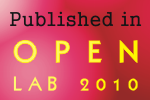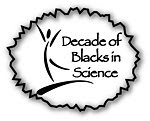I think it is important for young people, heck all people, to understand the whole world around them. For me, I am passionate about young people learning about the science in everything around them. Science is everywhere not just the fancy science lab class - that they won't let you in and use. Science is ubiquitous, but so many kids avoid it not realizing that everything they do, observe, and experience are examples of "Everyday Science".
Here's an experimental school that doing things a little different. German Kindergarteners Answering Call of the Wild. It's an outdoor school! Not a classroom, but the whole school. Kids are outside, in elements, all day - rain or shine. It's a wild and crazy idea but it's actually not that different from my summer experiences as a child. My mother worked for the city parks division. She was one of 2 adult workers at a neighborhood city park that would attract over a hundred kids a day. There were a few structured activities, but mostly the kids (including me) played games like tag and not it, jump rope, ball games like basketball (mostly the big boys), 4-square, wiffle ball, dodge ball, kickball. About once a week a roving city park worker came by for a fun structured activity - to learn a dance routine or walk on that giant planet ball or something.
But it was a blast. I credit my mother to getting me hooked to being outdoors - rain or shine - and getting dirty. I experienced nature in an urban setting every day. Some neat tricks she introduced me to included 4-leaf clover hunting and nature crafts. This was especially popular among the girls who tended to play fewer team sports than the boys. We'd collect wild flowers and tall grasses and make nature bouquets. My park included a little run-off tube (read artificial wetland) so cat tails and weeping willows were there.
Though I didn't learn any scientific names and I was horrible at remembering even common names of things, I began to develop a connection to this place, this park and its many microhabitats. I had a visual and aesthetic vocabulary, but being all of age 6, 7, 8, I didn't yet have the word vocabulary. But I knew under the big tree (probably an oak, now that I think back) everyone would hang out and eat lunch and cool off. There was no grass there, only silky light colored dirt and June bugs could be found. By the run-off tube, there were ALWAYS mosquitoes and dragonflies. The plants were taller and itchier there, too.
Out at the playing field it was a mix of grass, clover, dandelions, and 'regular grass'. On the plains of the park, it was mostly clover - white clover I would later come to know - and when it got tall and thick, I had to watch out for hiding garter snakes. But this field was always my favorite. (maybe that's why I LOVE prairies. to this day, prairie grasslands are my favorite biomes.) I'd hunt for 4 leaf clovers all day... and make clover flower garlands, jump ropes and hair wreaths. And there were ALWAYS small fuzzy bees there. Not the big bright yellow bumble bees -- smaller, but just as fuzzy. I was always worried about stepping or lying on one and getting stung. But it never happened.
Hmm, I didn't know it then, but I was young naturalist. And it is those memories that I think back on when I remind myself that urban ecology is a great and worthwhile area of study and foundation of life science for inner-city kids.
I hope everyone spends the rest of this gorgeous spring making memories while having your own Urban Science Adventures! (c)
Saturday, April 26, 2008
Childhood memories of my outdoor education
Subscribe to:
Post Comments (Atom)






















No comments:
Post a Comment